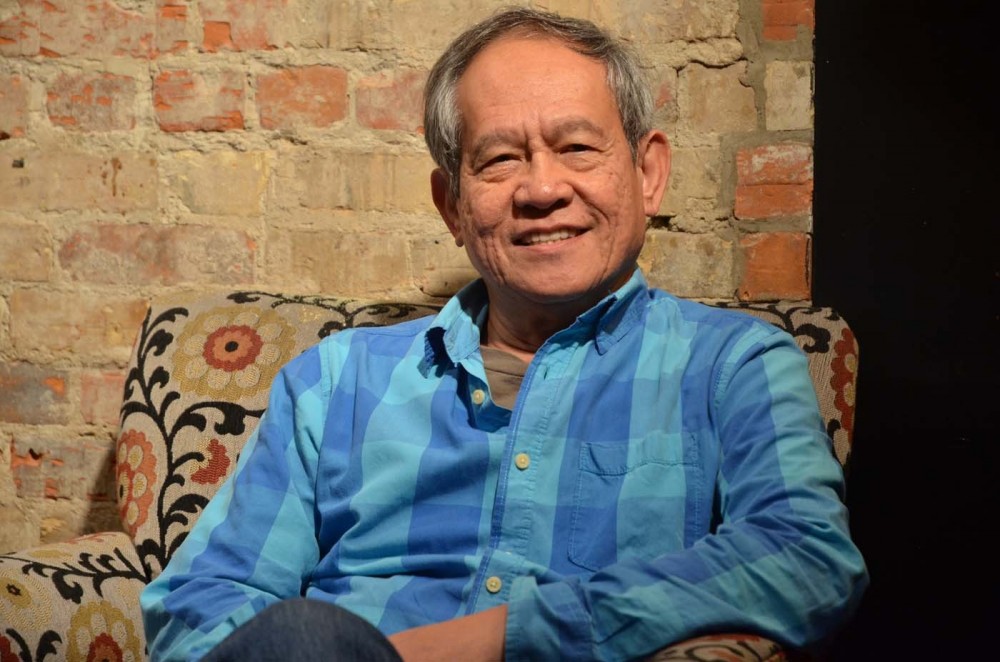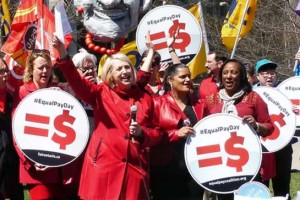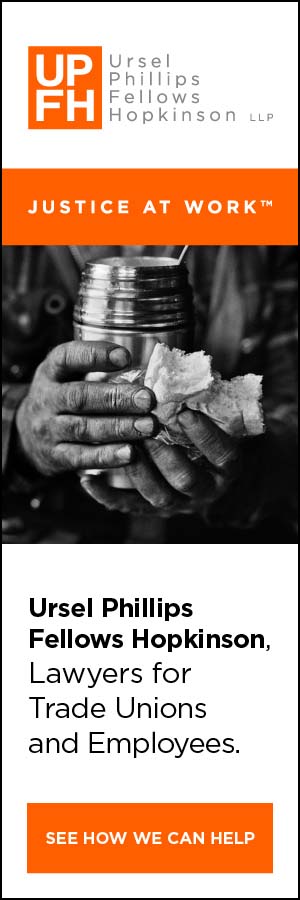On Saturday, September 6, the Toronto & York Region Labour Council hosted the 2014 Aboriginal Workers/Workers of Colour Conference (AWOC) in Scarborough, Ontario.
I attended the one-day conference, which included a keynote address by Hassan Yussuff, the first person of colour to be elected as president of the Canadian Labour Congress. Six workshops were held, including "Decent Jobs/Living Wages" and "Electing Champions to City Hall," and a guide to equity was launched.
Called Moving Beyond Diversity, Towards Inclusion and Equity: A Leader's Guide to Strengthen Unions, the 30-page guide, published by the labour council and written by labour activist and educator Jojo Geronimo, is meant to be a tool that any union can use to create a strong equity agenda as part of its organizational culture. I spoke with Geronimo about the origins, goals and future of the project.
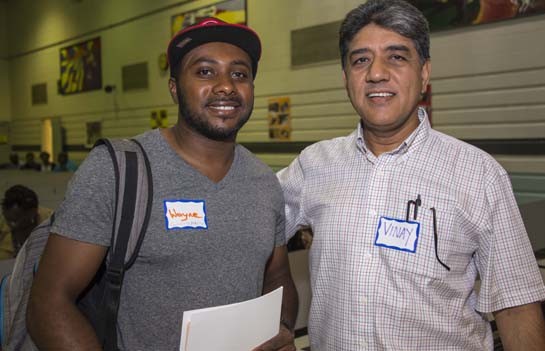
Wayne Clarke (left), from Unifor Local 414, took part in the 2014 Aboriginal Workers/Workers of Colour Conference, as did everyone shown in the following photographs. Vinay Sharma (right) is Unifor’s human rights director.
"We cannot simply say 'there will be equity,'" says Geronimo. "We need to intervene in our processes of organizing, collective bargaining, political action and so forth to make them equitable — to integrate equity into them. That's the aim of the guide."
"The term 'equity' is bandied about as if it is the same thing as diversity or inclusion, but it is not," Geronimo says. Diversity, as he explains in the guide, "is about the external face of the union," and whether the union leadership reflects the membership. Inclusion is about the internal operations of the union: "whether the union is welcoming of differences, or not," and "about whose voice is heard."
Says Geronimo, "It means looking at the ordinary, everyday things we do and say, and understanding that what may seem everyday and ordinary is actually exclusionary and discriminatory. But that may not be obvious at first glance." Equity, on the other hand, is about results.
Writes Geronimo, "equity points to the fact that equity-seeking groups face systemic barriers that effectively exclude them, with or without the intention of anyone in particular." For instance, if child care is not provided at a convention, this blocks the participation of many parents, mostly women.
The guide outlines how union leaders can identify and resist systemic racism in their unions and in their organizing. But, significantly, the author also hopes to equip workers of colour with the knowledge we ourselves need in order to shift those systems of power within our unions, labour organizations and activism. "The overall goal of the guide," he says, "aside from, obviously, addressing racism, is to empower racialized members of our unions, because the anti-racism struggle — broadly speaking and within our unions — must be led by racialized people. Nobody can liberate us but ourselves.
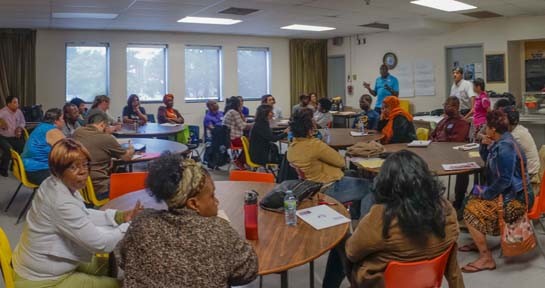
The 2014 Aboriginal Workers/Workers of Colour Conference (AWOC) focused on building power and racial diversity on city council and school boards.
"We will need allies in this struggle, but it is important for us to be empowered, ourselves, and part of that process of empowerment is education and self-organizing. So, we need to put the guide in the hands of our racialized people. First we have to train ourselves, and then we have to take the lead in the fight."
Understanding prejudice within marginalized communities and how that can stand in the way of solidarity and prevent effective labour organizing is part of this training. One of the workshops, called "Diverse Workers' Networks: Can They Build Power?" explored the labour council's efforts to build networks of union and worker activists within Toronto's Chinese, Somali and Filipino communities.
The workshop was facilitated by Anna Liu of the Asian Canadian Labour Alliance (ACLA) and Mohammed Hashim, labour liaison for the United Way of Greater Toronto. Speakers included K. H. Wong from the Chinese Workers' Network and Abdi Hagi Yusuf from the Somali Workers' Network. Luisito Queano, from the Filipino Workers' Network and Sharon Simpson, special projects coordinator with Labour Community Services, also spoke.
The concerns addressed included how these workers' networks can be used to engage the 85 per cent of union members who are inactive in their unions.
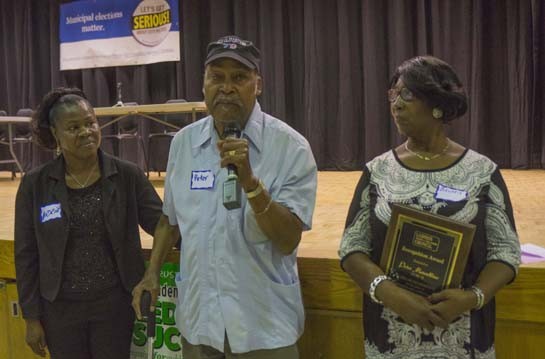
Peter Marcelline (Canadian Union of Public Employees Local 79) received a recognition award during the conference for his years of dedication and service to the Toronto & York Region Labour Council’s equity committee.
In Canada (and especially in the larger cities, like Toronto) there is an intersection between organizing around workers' rights, and immigration. The impetus to build a better union through pursuing equity can come from a newcomer's motivation to build a better life for their family and community. "I do this for my children, and the children who will come after," said Yusuf, from the Somali Workers' Network. "I do this for my community. We need to give a voice to those who cannot come to the microphone."
The second half of the workshop focused on finding solutions to setbacks experienced during community-specific worker organizing. The issues included limitations to people's ability to participate due to: a lack of free time; no access to child care; credentials not being recognized here in Canada; fear of reprisal; language barriers; racism in workplace leadership, and, finally, internal divisions.
It is no secret that collaboration between unions and community organizations would help build a stronger, countrywide movement, and that racism is a huge obstacle to that collaboration.
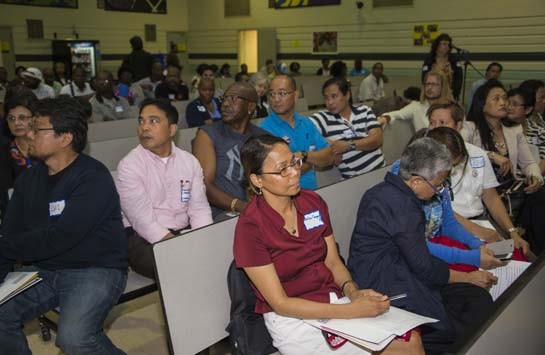
The equity guide and the "Diverse Workers' Networks" workshop addressed racism as a twofold problem. While people may have an idea of racism in a liberal sense (discrimination on the basis of race), it is necessary to acknowledge, understand and resist racism as a systemic issue that manifests both in the oppression of people of colour, and as internalized racism.
Internalized racism can include bigotry, partiality and inequality between and within different communities of colour. One example is shadeism: a perceived superiority based on lightness of skin amongst people of colour. A clear vestige of colonial race-based hierarchies, this prejudice can divide communities and weaken organizing efforts.
Still, it is important to understand that, despite the divisive nature of internalized racism and prejudice in communities of colour, this does not equate with the systemic barriers all people of colour face in the greater Canadian context.
"It's serious, but it's not racism," says Geronimo, "because we really don't have the power to enforce our prejudice amongst ourselves. A Filipino person can be prejudiced against a Chinese person, but society's institutions are not embedded with the superiority of Filipinos. Those institutions — their practices, policies and structures — are embedded with the idea of the superiority of white people."
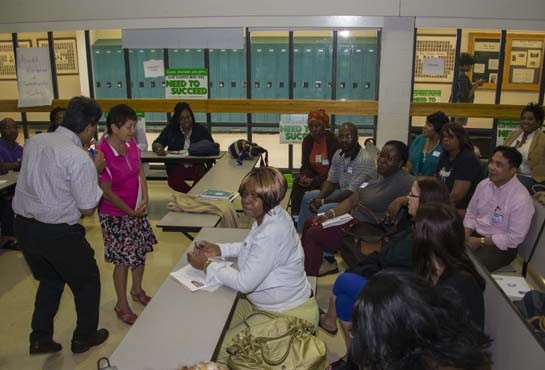
Overcoming racism in all its forms is an essential battle for union and community activists. Equity is not only essential to the success of labour organizing, but integral to resisting racism in Canada as a whole. As Geronimo says in the guide: "equity is the right thing to do."
One strategy to help combat divisions and build solidarity is to reinforce worker networks. This means ensuring all workers know about and have access to union resources and understand the important role unions play. It also means encouraging members to attend meetings, and events like the annual Aboriginal Workers/Workers of Colour Conference.
To end the workshop portion of the day, workshop facilitators had participants discuss questions like: What has been the level of engagement from members of your community? What are some of the reasons for a lack of, or depth of, engagement? and What could be done to get members of your community group more involved in the union movement? These discussions allowed participants from many different communities, unions, workplaces and age groups to share their experiences with each other.
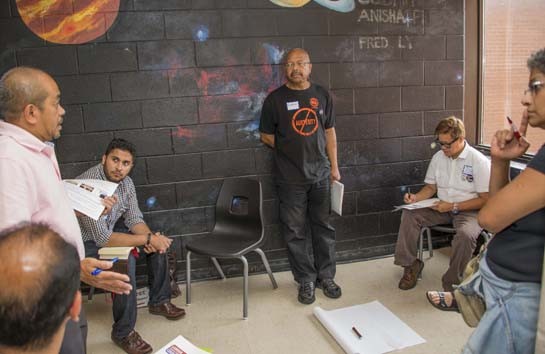
Learie Charles (centre) is a grievance officer with the Canadian Union of Postal Workers’ Scarborough Local 602.
One of Hassan Yussuff's campaign promises at the last CLC convention was to push equity and anti-racism in Canadian labour organizations. The idea of creating some kind of tool to be used by union activists of colour had come and gone. But Yussuff's election success brought that idea, as well as 20-year-old recommendations from the CLC National Anti-Racism Taskforce, back to the fore and, with the Toronto & York Region Labour Council's impetus, the equity guide was born.
"Some people see the leadership of the CLC being a person of colour as an opening in itself," says Geronimo. "But also, he made a commitment to us that he would push an equity agenda, specifically an anti-racism agenda, and that he would address racism in the unions. The strategic moment has come."
Geronimo says that while the guide is a comprehensive resource, it is not meant to be a universally applicable, step-by-step action plan. It is a working document, and he invites feedback. "I see this as a first stage," he says. "Let's experiment with this guide and then, using our experience, let's remake the tool and come up with another edition.
"Each union is very unique. There are big unions, small unions, multi-industry unions and single-sector unions. So, it is important that each one adapt the guide to their own situation."
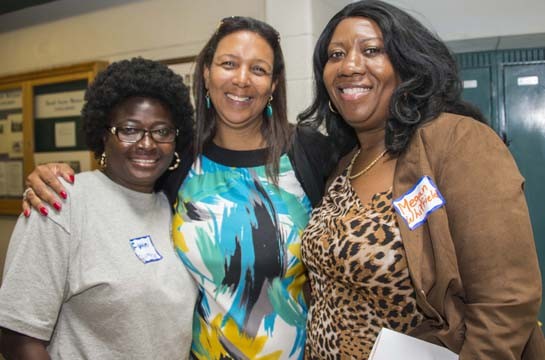
Olufunmilayo (Funmi) Olumade (left), a postal worker and member of CUPW’s Scarborough union local, with Marie Clarke Walker (centre), executive VP of the Canadian Labour Congress. Megan Whitfield (right) is the first Black female president of a CUPW local
The idea that the guide is an organic tool, and that guide users should bring their experiences back to the author to allow for a revised version, sets the stage for long-term conversations about racism in the labour movement, and recognizes how anti-racism work, like maintaining equity, is a continuous process.
While the guide focuses on anti-racism recommendations and strategies, its basic method could be applied to other issues of discrimination or exclusion in the labour movement. What's necessary for equity, whether or not you're talking about race, gender, or ability, is a "deliberate, organization-wide effort."
Says Geronimo: "You can't get an organization-wide effort until and unless people see this as essential to the goals and mission of the organization. So, it begins there. It begins with a bit of conviction to do something."
Download a copy of Moving Beyond Diversity, Towards Inclusion and Equity from the Toronto & York Region Labour Council.
Haseena Manek is an Ottawa-based labour journalist, and Our Times’ Online Community and Outreach Coordinator. Follow her on Twitter here.


